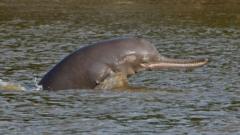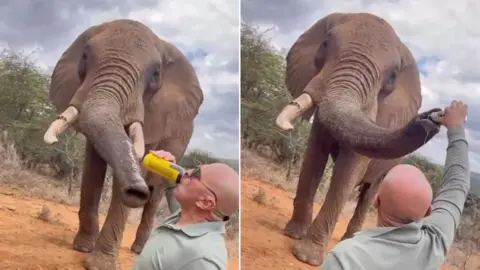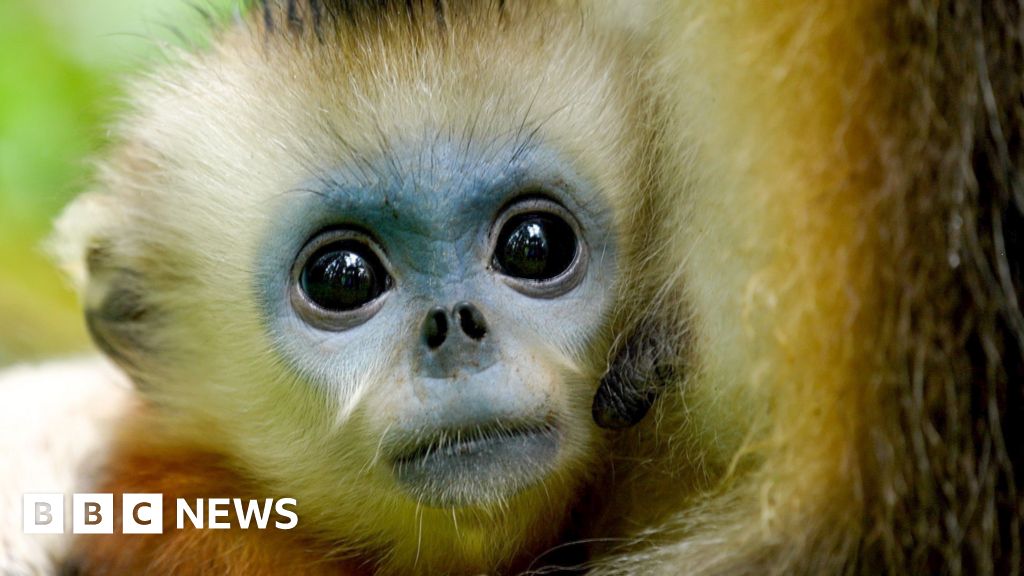India's rivers are home to an estimated 6,327 river dolphins, primarily the Gangetic dolphin, yet these fascinating creatures are in jeopardy. Unlike their ocean-dwelling cousins, Gangetic dolphins do not leap or swim upright; instead, they swim sideways, have long snouts, and are almost completely blind. This species, which also serves as India's national aquatic animal, primarily inhabits the Ganges-Brahmaputra river system.
Recent research conducted by the Wildlife Institute of India revealed that 6,324 of the river dolphins counted were Gangetic dolphins while only three were Indus dolphins, with most Indus dolphins residing in Pakistan. Both types of dolphins are classified as "endangered" by the International Union for Conservation of Nature (IUCN).
These unusual river dwellers are often referred to as "living fossils," having evolved from marine ancestors millions of years ago. They adapted to life in murky, shallow rivers, which has led to their unique traits. However, researchers and conservationists have found that the threats to these dolphins are alarming, with over 500 deaths recorded since 1980 due to accidental captures in fishing nets and intentional killings.
Awareness about the plight of these dolphins has improved since the 2009 declaration of the Gangetic dolphin as India's national aquatic animal. Conservation initiatives, including a 2020 action plan and a dedicated research center slated for 2024, aim to boost their numbers. Yet, dolphin poaching, accidental deaths, and increasing boat traffic from river cruise tourism pose significant risks.
Conservationist Ravindra Kumar Sinha warns of the possible extinction of Gangetic dolphins under the pressures of modern development, echoing the fate of the Baiji dolphins in China's Yangtze River. With their slow reproductive cycles and reliance on echolocation, Gangetic dolphins are particularly vulnerable. Despite these challenges, Sinha remains optimistic.
“Government initiatives have played a big role in saving the dolphins. A lot has been done, but there is still much more to do,” he affirms, emphasizing the importance of continued efforts for their survival.





















